
To boost your learner engagement, you need to critically assess learning content you create and how you deliver it to your employees.
Most L&D teams face challenges when it comes to learner engagement, and there is one key reason for that: the attention economy.
This is simply where the sheer volume of content exceeds our attention spans, meaning there’s more content than we could ever consume.
And it just doesn’t affect advertisers and marketers.
L&D face tough competition too, from office chitchat to streaming services and much more. So how can we get our audience invested in the learning at hand?
Keep reading to learn:
- What learner engagement really is
- Why you need to boost learner engagement
- Our 13 tips to increasing learner engagement
Let’s get started.
📈 Pro Tip
Read the full list of tips via this handy pdf – view it download-free, here.
What is learner engagement?
Learner engagement reflects the quantity and quality of learner participation in their training. Essentially, it shows how successful a learning experience is as you can gauge the level of engagement across all participants.
Since learner engagement goes hand in hand with co-learner cooperation and interaction with materials and course providers, it’s a great way to critically assess aspects of your learning experience.
But what makes an engaged learner?
Usually, an engaged learner is:
- Eager to get involved
- Motivated
- Inspired
- Excited to learn
- Willing to put in effort
Understanding what underpins learner engagement is key to making the correct steps to improve it.
Why is learner engagement important?
Learner engagement is crucial, not only to employees getting value from your courses, but even just finishing them.
There are a whole host of stats around learning engagement. A key one is that teams are 14% to 18% less productive with poor engagement.
So what exactly are the benefits?
Improving your learner engagement can result in:
- A boost in ROI
- Improved learning retention
- Improved learner performance
- A culture of learning
- Promoted communication
- Increased motivation to develop
- Longer employee retention
All sounds pretty good, right?
To achieve it for yourself, here are our top tips for boosting learner engagement in your organisation, whichever way you measure it.
13 ways to improve your employee learner engagement
You might be finding low engagement rates when it comes to your learning. Or, you might just be starting out and worried about investing a lot of time and money into a project that isn’t successful.
But don’t worry.
We’re going to show you exactly how to create high engagement in your learning materials.
We spoke to our in-house experts to find out the best used tips by our clients when it came to upping learner engagement.
So, let’s get stuck in.
Here are the 13 best ways to improve learner engagement:
- Market your course well and remind users
- Onboard your employees early
- Build a culture of learning
- Provide high-quality learning materials
- Consider blended learning
- Invest in mentoring
- Personalise your content
- Test retention and encourage real-life application
- Optimize your training with microlearning
- Leverage social networking
- Try interactive formats
- Promote long-term learner engagement
- Find gaps through reporting
Market your course well and remind users
You can create the most engaging learning materials. But, if you’re not promoting them and their benefit, then nobody will engage with them.
When you’re launching an LMS, or a new course, make sure you market them internally.
Creating a strong sense of brand on your LMS is a great way to market it to your people.
When you’re using a new system, it can be difficult managing notifications. So, invest in a tool where you can integrate well with existing tools.
⚡️ Pro Tip
At Think, we offer tools like TENT (text and email notification tool) meaning you can remind users about courses and training as and when you need.
Learn more about TENT here.
Onboard your employees early
Onboarding your team is key to ensuring a smooth start. It can also result in better employee performance and greater affinity to your company.
Your onboarding process is a great way to kickstart an employee’s relationship with your learning materials. Plus, you can share your core values and principles.
If learning and development is important to you, make sure your people know as soon as they join your company.
This will ensure they know it’s important from the get-go.
Create a strong onboarding learning environment and your employees will feel better prepared in their role. Brandon Hall Group found that a great onboarding process can increase new hire retention rate by 82%. Plus, they’ll have a greater understanding of your learning courses and be more likely to engage in the future.
Build a culture of learning
Creating a clear culture of learning in the workplace can have huge advantages. In fact, 94% of employees would stay at a company longer if it invested in their career development.
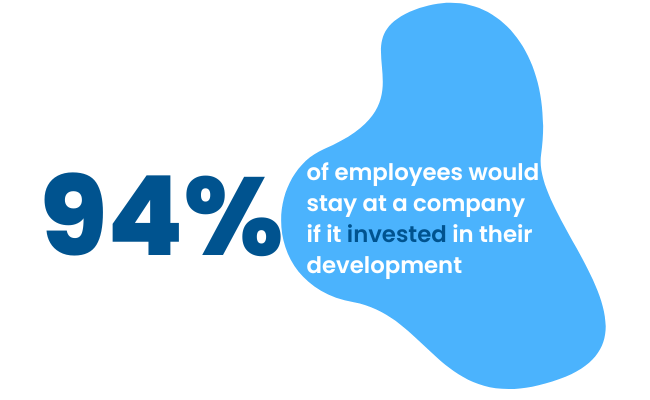
By making learning a focal point from the get-go, you can ensure that employees are advocates as soon as they join you.
Providing your team with resources to learn means they always have the means to improve and develop within their career.
Provide high-quality learning materials
Of course, the learning materials you create need to be high-quality.
Low-quality content will struggle to capture or keep the attention of its viewers.
Take time to create quality content.
Ask yourself:
- What is the point of this piece of learning?
- How can we keep it simple?
- Can we personalise this content at all?
These will help you make more tailored, more specific and more engaging learning content for your team.
And remember, content is important, but so is how it’s displayed. Try mixing mediums to encourage engagement (more on that later).
Test your brand new course with some guinea pig learners and take their feedback on. By investing in high-quality content, you can guarantee a much higher learner engagement.
Consider blended learning
Traditionally, learning takes place in the classroom.
Nowadays, learning is moving online. But, it could be that neither of these formats work for your learners. In fact, you might want to consider blended learning. This is where you combine online resources and training materials with face-to-face learning.
73% of teachers say blended learning increases engagement, so it’s worth considering when creating your course material.
Invest in mentoring
Mentoring is becoming increasingly important in L&D. In its 2022 L&D Social Sentiment Survey, Donald H. Taylor discovered that mentoring is now 4th on a list of learning and development strategies L&D teams are looking at. That’s a jump up from 6th compared to 2021.
And it’s no surprise why.
90% of workers who have a mentor report being happy in their job.
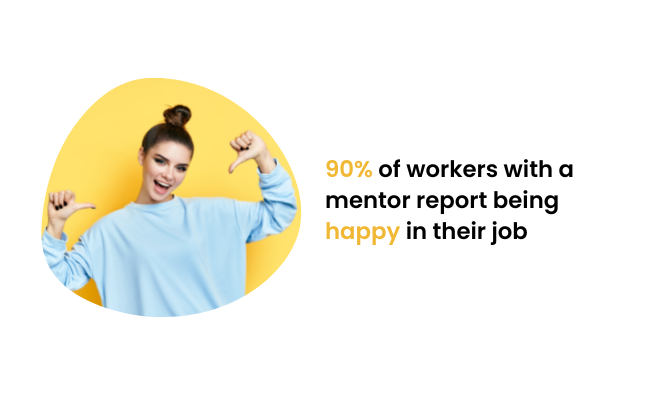
And the benefits don’t just impact mentees. Leaders who sponsor or mentor others are twice as likely to be aware of junior-level colleagues’ concerns.
Creating a strong mentor programme can provide your people the resources they need to develop further outside of standardised training.
🌠 Pro Tip
We love mentoring. The benefits are huge, which is why we created our own mentoring LMS plugin. Mentees can search through available mentors to find their perfect match.
Learn more about Think Link.
Personalise your content
Personalised content is proved to have a higher engagement rate. Just look at the likes of Netflix and Amazon.
94% of businesses say that personalisation is critical to their success, and that’s applicable to learning too.
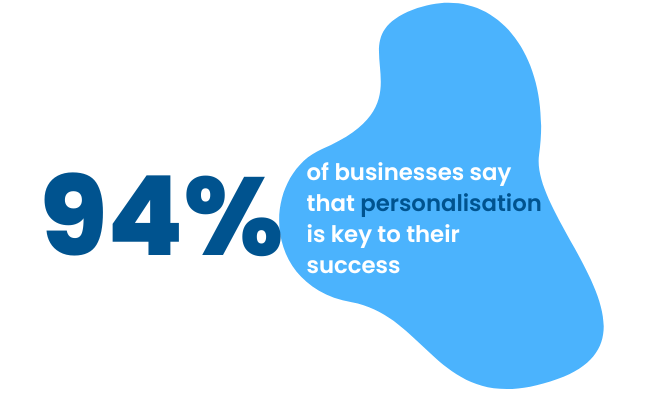
In your LMS, you will want to show content that your viewer is going to be most interested in.
There are two key ways to do this.
There’s personalisation based on courses a user has engaged with previously. You can use this to present courses that they might be interested in.
There’s also curated lists.
If your learner is an intern in the company, a leadership course might not interest them right now.
Instead, you can curate a list based on the data and information you have on them. A specific course might interest your learner based on their job title, length of time in the company or previous learning habits.
Show this to them as soon as they log into the platform. You’ll be surprised at the impact this can have on your learner engagement.
Test retention and encourage real-life application
Your learners might take your course, and then never use it again.
Learner retention is a key factor in learner engagement. While you might create a great learning course, it’s no use if the learner doesn’t remember the skills and knowledge they learned.
Having a positive feeling about previous courses is sure-fire way to encourage further learning.
So, quiz your learners. Having them recall information they learned helps them move new skills from their short-term memory to their long-term memory.
Applying this newfound knowledge in real life is key too. This real life experience helps develop key competencies and can aid knowledge sharing too.
Optimize your training with microlearning
It can be tempting to create one big course with all the information an employee could ever learn in one space.
But being faced with a 10 hour plus course could be off-putting.
It was found that the retention rate from microlearning is 70-90%, compared to 15% from traditional learning.
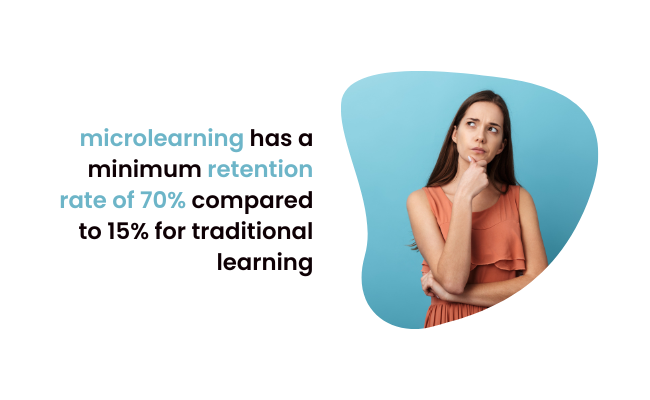
Providing short bursts of content (3-5 minutes long) can help learners manage their time when it comes to training. Plus, it can help them feel more engaged since they’re not faced with long slogs of training in one go.
Leverage social networking
Humans are innately social.
So, let learners share what they are learning with their colleagues, just like they would on social media.
Doing this brings the collaboration and knowledge sharing that humans desire into your learning strategy. So why avoid it?
Social learning is more important now than ever since the increase in hybrid working. Integrating social learning to your strategy is a great way to overcome this and bridge the gap between internal teams.
🚀 Pro Tip
We’re a Platinum partner of Totara, which has a core function that can support social learning.
Learn more about Totara Engage
Try interactive formats
Gamification can be as simple as displaying a leader board in your learning platform or incentivising learning with prizes or similar.
The benefits are clear. Even simple gamified elements hold a learner’s attention for 2.6 times as long as non-gamified learning.
If you have the time and resource, you could create whole courses as games. In fact, some of our clients use us to create interactive quizzes for example, drag and drop quizzes etc.
Even simple interactive elements can help keep attention through a course – no matter the subject!
Promote long-term learner engagement
Your learners have completed your newest course. A great success! But now what?
To really make the most of your learning, your employees need to be engaged enough to store, recall and apply their new knowledge.
The science tells us that habits are formed when actions we perform make us feel good.
So basically, we learn something new and our brain lights up. Pretty neat right?
Research shows it can take 66 days on average to form a new habit. So, how are you engaging learners across this period of time?
Step one is creating an engaging course.
Step two, as we talked about already, is getting users to recall that new knowledge.
But step three is long-term. Create feedback and follow up processes for one-to-ones and appraisals to allow learners to see how they’ve applied their new knowledge.
A feedback tool within your LMS can help your learners get real-time feedback from key colleagues on how their training has helped them develop. Nothing like a bit of positive feedback to spur you on!
Find gaps through reporting
Once you’ve created your course, it’s not done and dusted. Your courses should constantly be evolving.
And reporting can help you do that. In fact 82% of business leaders consider analytics to be a key feature of any LMS.
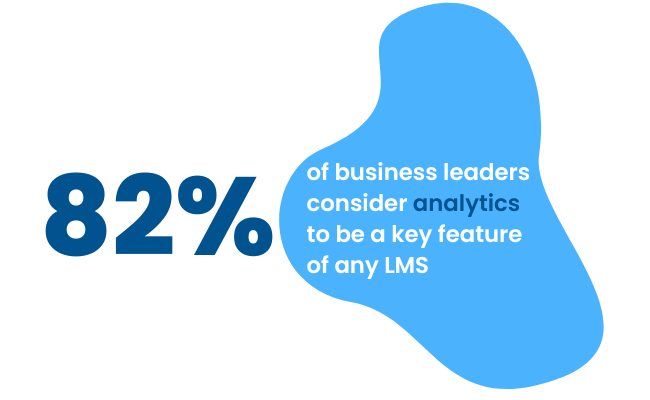
Your LMS should offer you easy to use reporting tools to measure learning activities and spot any issues with learner engagement.
With the right LMS in place, you’ll be able to see how your learners are progressing (or not), so you can intervene where you need to and put remedies in place.
Get higher learner engagement rates with Think
Planning your learner’s journey from the very first touchpoint, right through to the last, is the key to boosting learner engagement.
Often, it’s the little things that matter to learners, such as a seamless login experience or efficient search results.
So if you want to learn more about a platform that will help you take control of these little things, why not book a demo with us?
We offer a whole host of key LMS features that can help you level up your learning function.
Book a demo with the team to see it in action.

